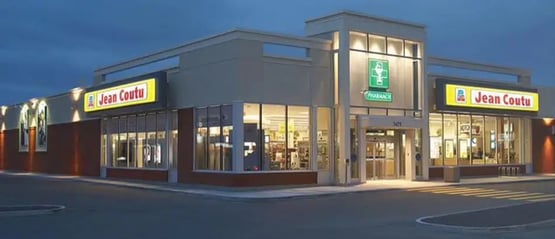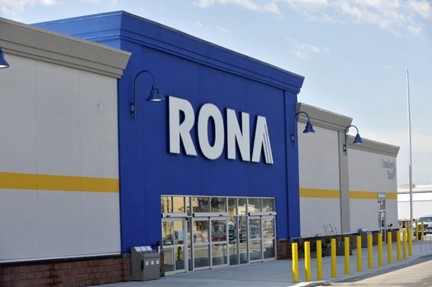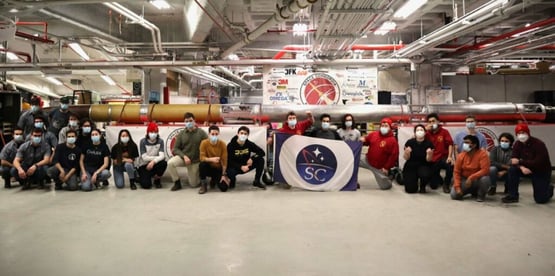Omni-channel Retail: Offering a Seamless Shopping Experience to Customers
How the latest innovations in retail technology are bringing the benefits of online shopping to high
street stores
Since the rise of online shopping, it seems that everyone in the world of retail has been debating the
future of the high street. Not only do offline stores have to weather a particularly long and brutal
recession, but they also have to compete with an ever-expanding online sector. In fact, recent
estimates suggest that while bricks-and-mortar retailers are expected to grow 1 – 2 percent a year,
online retail is growing at a rate of 10 percent annually. To counter this ‘threat’, many high street
shops have set up online stores – often with great success.
However, it is important to remember that 90 percent of retail goes through traditional stores.
There will always be a place for the high street, as consumers will always want to be able to touch,
feel and see a product for themselves before buying. Whilst operating a ‘multi-channel’ environment
in the form of having both a traditional and an online store certainly gives consumers more choice,
retailers are increasingly asking themselves: “What is it that drives consumers to online stores, and
how can we incorporate these features into our offline stores to create one, seamless customer
experience?”
Online shopping
Niclas Qvist formerly VP of Marketing and Global Partner Management at Pricer, the global electronic shelf
label (ESL) solution provider. He believes that understanding all the benefits afforded to consumers
who shop online is key. “In the past, shopping was a private experience – you did it by yourself. Now,
thanks to the internet, it has become far more social,” he says. “Before you purchase anything,
customers may access at least one review website, and look at other consumers’ feedback and
advice. They share their shopping experience via social media such as Facebook, upload photos of
their purchases to Instagram, and ask for their friends’ input. What’s more, online stores are
incredibly transparent and display a lot of information on each product – what it is made from,
where it is made, and what the availability is. We are living in the Information Age – and shopping is
no exception.”
By introducing easy access to information into their stores, high street retailers will be able to merge
the best of both worlds. “By combining the tangible ‘see and touch’ aspect that you can only get in
an offline store with the transparency of online shopping, high-street retailers will be at a huge
advantage,” said Niclas Qvist. “Such an integrated shopping experience will allow consumers to shop
the way they want, and as such offline retailers can greatly boost conversion rates – going that extra
mile to ensure that consumers who enter always leave with a product, convinced they have made
the right decision.”
So, how can these two worlds be merged together? According to Mr Qvist, the answer is simple –
implement the latest retail technology. “In this day and age, new retail technology offers stores the
opportunity to transcend multi-channel retailing and implement an omni-channel environment,
whereby they can connect the internet, mobile, and offline channels into one truly seamless
customer experience.”
More opportunities with mobile phones
“Most consumers today carry smartphones with them at all times, and these can allow offline stores
to interact with consumers on a whole new level,” Mr Qvist explains. “With Pricer’s Electronic Shelf
Labels (ESLs), for example, not only can a retailer place a vast amount of product information on one
label, but they can also include bar codes, QR codes, or NFC, which can be used to link consumers to
positive reviews online, discounts and promotional codes – anything.”
It is also now possible for retailers to bring the ‘social’ aspect of online shopping to the high street.
PricerLab, Pricer’s Research & Development division has been analysing the opportunities offered by
ICT and social networks in the offline retail sector, and have had some extremely positive results.
Their latest innovation will allow consumers to ‘like’ and ‘comment’ on products in real-time, just as
they would do online, simply by tapping a Pricer ESL with their smartphone. The ESL will then
update, in real time, the number of ‘likes’ a product has received, and retailers can choose to also
display any glowing product reviews.
Personalised shopping experience
Shopping online also offers consumers a more ‘personalised’ service by recommending products
based on past purchases and viewed items – and the latest retail technology can offer a similar
intuitive, ‘smart’ service. With a QR code on an electronic label or an NFC enabled label, a store can
link the customer who scans the code or taps the ESL with his mobile to a discount on another,
similar product.
Allowing customers to access information immediately through the latest retail technology can be
used by high street stores to create a truly ‘omni-channel’ environment. “Most people can relate to
going to a shop, finally finding something they want, and then having to wait thirty minutes only to
be informed it is out of stock. This means an unhappy customer and a retailer who has missed an
opportunity to put money in the register,” said Mr Qvist. “In an omni-channel environment,
whichever channel customers use, the store will be viewed as a single, transparent system – as
opposed to multiple channels with separate inventory and processing systems.”
“With our ESL’s, you can not only tell the customer that this product is out of stock, but more
importantly, you can tell them when it will next be available in store, give directions to another
branch of your store which has availability, display a QR code or include NFC which will take them to
your online store so they can order it, or suggest a similar product as an alternative,” he explained.
“In my view, future shopping will be about bringing the best of mobile, e-commerce, and in-store
shopping experiences in a one and only similar experience. This is the true value of today’s retail
technology,” concluded Mr Qvist. “It creates a seamless, simple experience for the consumer, and
ensures that, in that crucial moment when they are considering buying, they are convinced, and
don’t walk out of the store empty-handed.”


